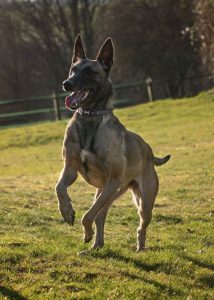 The History and Origin of the Belgian Shepherd
The History and Origin of the Belgian Shepherd
Sheepdogs of this type date back in Belgium to the Middle Ages. Four varieties of the breed exist sharing the same physical attributes and alluded only by coat and colour – Groenendael: black and long coat; Tervueren: long coated and seen in red, fawn or grey, often with a black mask and overlay; Malinois: with a dense, short coat and with the same colourings as the Tervueren; Laekenois: a harsh wiry coat, red/fawn with some black shadings.
It was not until 1891, the first breed club was formed and Professor Adolphe Reul of the Belgian veterinary school examined 117 examples of the breed and classified the varieties which were named according to the area of Belgium where they originated.
Their physical attributes equip them to be excellent herding dogs: they are agile, fast and lightly built yet robust, but the breed has shown its versatility as a service dog, widely used by the police and armed forces. They have an appetite for work, being watchful, wary and highly intelligent.
An Overview of the Belgian Shepherd Malinois
The Malinois, or Mali as they are often referred to as, is a medium-to-large breed of dog, sometimes classified as a variety of the Belgian Shepherd dog rather than as a separate breed. The name “Malinois” is derived from Malines, the French name for the breed’s Flemish city of origin, Mechelen.
Characteristics of the Belgian Shepherd Malinois
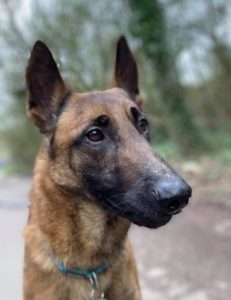 As a former herding dog responsible for protecting both their herd along with the farm and its owner, the Belgian Shepherd to this day still possesses all the valuable qualities of an outstanding guardian of home and farm. Vigilant, lively and with lightning-fast reactions, they are prepared to defend their “pack” at all times. Due to their strong protective instinct, they instinctively assume responsibility for everything belonging to their home. Owners of a Belgian Shepherd need not fear break-ins.
As a former herding dog responsible for protecting both their herd along with the farm and its owner, the Belgian Shepherd to this day still possesses all the valuable qualities of an outstanding guardian of home and farm. Vigilant, lively and with lightning-fast reactions, they are prepared to defend their “pack” at all times. Due to their strong protective instinct, they instinctively assume responsibility for everything belonging to their home. Owners of a Belgian Shepherd need not fear break-ins.
Nevertheless, this gutsy dog isn’t one for anxious or uncertain owners. The Belgian Shepherd needs a worthy partner at its side who is able to control its temperamental character with plenty of authority, intuition and consistency. In order to avoid nasty surprises, its protective instinct should be controlled from the outset. Expert training and good socialisation are indispensable in order to live harmoniously with this intelligent watch dog.
The Malinois is primarily a working dog that is still widely used by the military forces of both the UK and other countries, and the police in their native country of Belgium and other regions. At first glance, the Malinois is similar in appearance to the German Shepherd in terms of size and build, but the Malinois is available in a much wider range of coat colour and pattern combinations.
The Malinois is a breed that is becoming more common within the UK and other countries as a domestic pet rather than a working dog, although these dogs still retain the activity levels, temperament and intelligence of their working history. They can be a challenging breed to keep within a domestic environment without an experienced owner, and they are not a breed of dog of which ownership should be considered lightly. As with all breeds and types of dogs, it is important to do plenty of research if you are considering taking on a Mali, and ensure that you are confident in having the experience and ability to handle and train them effectively.
What kind of owner and household suit a Mali?
 An experienced dog owner is usually best suited to a Mali. Whatever the Mali does it does with great enthusiasm whether that be working, playing or just adoring you their owner. The Mali likes to be included in all your activities so if you like jogging, hiking, running, biking, , outdoor activities or just spending a lot of time with your dog then the Mali may be a good choice for you. However, if you often work long hours must travel frequently or have other hobbies or activities that often keep you away from your dog then this is definitely not the breed for you.
An experienced dog owner is usually best suited to a Mali. Whatever the Mali does it does with great enthusiasm whether that be working, playing or just adoring you their owner. The Mali likes to be included in all your activities so if you like jogging, hiking, running, biking, , outdoor activities or just spending a lot of time with your dog then the Mali may be a good choice for you. However, if you often work long hours must travel frequently or have other hobbies or activities that often keep you away from your dog then this is definitely not the breed for you.
It goes without saying that such sporty and temperamental dogs absolutely need to be with active and experienced owners. A Mali owner mainly requires the time and inclination to get actively involved with their dog. Mentally and physically stimulated dogs aren’t just happier and healthier, but are also more receptive in terms of obedience and training. Especially with this breed possessing a certain stridency, insufficient training can otherwise lead to dangerous behavioural problems.
Along with plenty of exercise and activity, shepherd dogs therefore also require consistent training and early socialisation to adapt to life as a family dog. However, you shouldn’t forget that these dogs are very sensitive in nature and mainly need love, calm and tranquility – along with consistency. They find excessive severity distressing, so this will certainly not lead to the desired training success. They enjoy affection in the form of cuddle sessions just as much as doing activities together. Dogs that receive sufficient physical and mental stimulation prove calm and well-balanced at home and loyal companions that will bring owners many years of joy.
What kind of training does the Mali need?
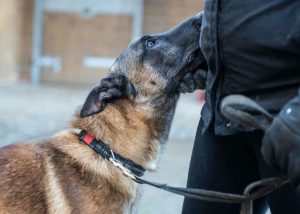 The Mali is a very active, intelligent dog that requires early socialisation and exposure to different situations, people and dogs. A puppy socialization class is strongly recommended for Mali puppies. New owners are often amazed and delighted at how quickly these dogs learn. But beware they are as quick to pick up bad habits as good! They are very sensitive to corrections, and respond best to positive reinforcement training using treats and toys.
The Mali is a very active, intelligent dog that requires early socialisation and exposure to different situations, people and dogs. A puppy socialization class is strongly recommended for Mali puppies. New owners are often amazed and delighted at how quickly these dogs learn. But beware they are as quick to pick up bad habits as good! They are very sensitive to corrections, and respond best to positive reinforcement training using treats and toys.
Many people use clicker training with these dogs. These same characteristics can cause trouble if the owner fails to take the time to train them properly or combines harsh corrections with poor training techniques. Harsh treatment can cause the dog to panic or freeze and may even provoke aggression.
What activities do Mali’s like?
These dogs excel at obedience, tracking, agility, flyball, search and rescue and just about anything else a dog can do. Everything is a game to them and they love games!
Are Mali’s aggressive?
A well-bred, well-socialised, and well-trained dog should calmly evaluate every situation and use good judgement in responding. It should not be aggressive or nervous in its attitude towards strange people or situations. Dogs with poor temperaments or who have been poorly socialised or trained, however, may be “shy” snapping or growling out of fear. For this reason, it is important to buy your Mali from a breeder who produces dogs with good temperament and to get your puppy used to meeting new people and dogs early in life, so that he will have a relaxed and accepting attitude towards them when he grows up.
Multi-dog households
Both male and female Mali’s will usually get on with other Mali’s and often with other breeds in the same household. Each dog has its own character, however. Males have been known to live in harmony with each other, as have females, while others do not get on with their own sex.
Children
On the whole Mali’s are very good with children, although the children need to be taught to be good with dogs!! Any dog, particularly from a large herding, guarding breed should not be left unsupervised with small children. Children should not be expected to have the maturity required for consistent and fair treatment and training of a dog. If there is a dog in the house, children can learn about their companionship and also about the responsibilities of dog ownership.
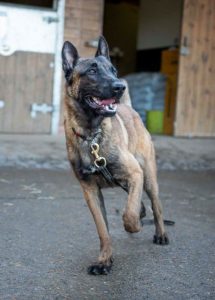 Exercise
Exercise
Regular, inter-active exercise is important to the health of the Mali. As a breed the Mali loves exercise such as walking and jogging (or even running whilst the owner is bicycling with care) but they like even better to play and be active with their owner (eg retrieving, searching, tracking, playing hide and seek). Exercise is necessary not only for the physical health of the Mali, but also for his mental health. Mali’s are not normally “hyperactive” or prone to running away, but they are not usually content with a stroll round the block on the lead. Many behavioural problems stem from a lack of entertainment for these dogs’ active minds. They can be restless and destructive if they not given enough to think about. They are experts at pestering their owners into joint activities.
Grooming
The Mali has a fairly easy to care for coat, but it does need regular attention. In summer, probably a weekly brushing would be adequate, whereas in winter, if the dog gets wet and muddy it would be necessary to wash away, dry the dog and then brush out the mud daily. Bear in mind that a bitch will usually moult about 12 weeks after her season, whereas dogs tend to respond more to the weather. When the moult is taking place daily grooming is essential.
Grooming time is also an excellent opportunity to check out your dog’s health and spot problems early. It is easy to check the state of eyes and ears and also notice any lumps and bumps, bites and scratches.
If you groom thoroughly and regularly there will be relatively little coat left on your carpets! A quick brushing for just a minute or two daily, and a more thorough brushing about once a week is all it should normally take.
What kinds of health problems do Mali’s have?
Mali’s are generally healthy dogs living an average of 10 to 14 years. Like all larger dogs they are somewhat susceptible to hip dysplasia, however, which is a crippling inherited disorder, so it is important when getting a puppy to make sure that both its parents have had their hips scored under the BVA/KC scheme. There is a problem with cataracts so again breeding stock should be checked under the BVA/KC scheme. Another problem is epilepsy which is again thought to be inherited.
Highlights
- Malinois have a great deal of energy and need a lot of exercise. Make sure you have the room and time to provide it.
- Malinois are very intelligent and alert. They also have strong herding and protection instincts. Early, consistent training is critical!
- Although they are good-size dogs, they are very people-oriented and want to be included in family activities.
- Malinois are constant shedders. They shed heavily twice a year.
- Malinois are intense dogs that are play-oriented and sensitive. Training should be fun, consistent, and positive.
- Because of their intelligence, high energy, and other characteristics, Malinois are not recommended for inexperienced dog owners.
- To get a healthy dog, never buy a puppy from an irresponsible breeder, puppy mill, or pet store. Look for a reputable breeder who tests her breeding dogs to make sure they’re free of genetic diseases that they might pass onto the puppies, and that they have sound temperaments.
Breed Standards of the Belgian Shepherd
 A Breed Standard is the guideline which describes the ideal characteristics, temperament and appearance including the correct colour of a breed and ensures that the breed is fit for function.
A Breed Standard is the guideline which describes the ideal characteristics, temperament and appearance including the correct colour of a breed and ensures that the breed is fit for function.
General Appearance – Medium-sized dog, well proportioned, intelligent, attentive, hardy and alert. [Four Varieties: Groenendael; Laekenois, Malinois and Tervueren.]
Characteristics – With fine proportions and proud carriage of head, conveying an impression of graceful strength. Not only a sheep dog, but a guard dog.
Temperament – Wary, neither timid, nervous nor aggressive.
Head and Skull – Head finely chiselled, long but not excessively so. Skull and muzzle roughly equal in length, with at most slight bias in favour of muzzle, giving impression of a balanced whole. Skull of medium width in proportion to length of head, forehead flat, centre line not very pronounced; in profile, parallel to imaginary line extending muzzle line. Muzzle of medium length tapering gradually to nose. Nose black, well-flared nostrils. Moderate stop. Arches above eyes not prominent, muzzle finely chiselled under eyes. Cheeks spare, quite flat but well muscled.
Eyes – Medium size, neither protruding nor sunken, slightly almond-shaped, preferably dark brown; black rimmed eyelids. Direct, lively and enquiring look.
Ears – Distinctly triangular appearance, stiff and erect, set high, moderate length with external ear well rounded at base.
Mouth – Wide, lips thin-textured, very firm, strongly pigmented. Strong white teeth firmly set in well developed jaws. Scissor bite, i.e. upper teeth closely overlapping lower teeth and set square to the jaws. Pincer bite tolerated.
Neck – Very supple. Neck slightly elongated, well muscled and without dewlap, broadening slightly towards shoulders. Nape very slightly arched.
Forequarters – Withers distinct, strongly boned throughout with wiry, powerful muscle structure. Shoulder blades long and oblique, firmly attached, flat, forming such angle with humerus as to enable elbows to work easily. Forelegs long, well muscled, parallel. Pasterns strong and short. Carpus clearly defined. Dewclaws permissible.
Body – Body powerful but elegant. In males, length from point of shoulders to point of buttocks approximately equal to height at withers. In females slightly longer permissible. Chest deep and well let down. Ribs moderately well sprung. Upper line of body straight, broad and powerfully muscled. Belly moderately developed neither drooping nor unduly cut up continuing lower line of chest in a graceful curve. Rump very slightly sloping, broad but not excessively so. Skin springy but quite taut over whole body. All external mucous membranes highly pigmented.
Hindquarters – Well muscled and powerful. Good but not excessive angulation; hocks well let down. Viewed from behind, legs parallel.
Feet – Toes arched, very close together; soles thick and springy with large dark claws. Forefeet round. Hindfeet slightly oval.
Tail – Firmly set, strong at base, of medium length. When at rest, hangs down, with tip slightly bent backwards at level of hock; when moving it should lift accentuating curve towards tip, never curled, nor bent to one side. Tip may be carried slightly higher than topline.
Gait/Movement – Brisk, free and even.
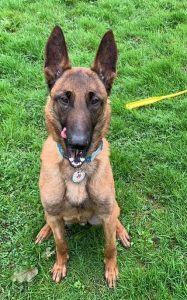 Coat – There are three distinct coat types:
Coat – There are three distinct coat types:
Groenendael/Tervueren – Outer coat long, straight and abundant. Texture of medium harshness. Not silky or wiry. Undercoat extremely dense. Hair shorter on head, outside of ears and lower part of legs. Opening of ear protected by hair. Hair especially long and abundant, ruff-like around neck, particularly in males. Fringe of long hair down back of forelegs, long and abundant hair evident on hindquarters and tail. Males longer coated than females.
Laekenois – Harsh, wiry, dry and not curly. Any sprinkling of fluffy fine hair in locks in rough coats is undesirable. Length of coat about 6 cms (21/2 ins) on all parts of body. Hair around eyes but not to obscure them. Muzzle hair not so long as to make head appear square or heavy. Tail not plumed.
Malinois – Hair very short on head, exterior of ears and lower parts of legs. Short on rest of body, thicker on tail and around neck where it resembles a ridge or collar, beginning at base of ear and extending to throat. Hindquarters fringed with longer hair. Tail thick and bushy. Coat thick, close of good firm texture with woolly undercoat, neither silky nor wiry.
No variation in these types is acceptable.
Colour – The acceptable colours relate directly to coat type.
Groenendael – Black or black with limited white as follows: small to moderate patch or strip on chest, between pads of feet and on tips of hind toes. Frosting (white or grey) on muzzle.
Laekenois – Reddish fawn with black shading, principally in muzzle and tail. Tervueren/Malinois – All shades of red, fawn, grey with black overlay. Coat characteristically double pigmented, wherein tip of each light coloured hair is blackened. On mature males this blackening especially pronounced on shoulders, back and rib sections. Black mask on face, not extended above line of eyes and ears mostly black. Tail should have a darker or black tip. Small to moderate white patch or strip permitted on chest, between pads of feet and on tips of hind toes. Frosting (white or grey) on the muzzle. Beyond the age of 18 months a washed out colour or colour too black undesirable.
No variation on these colours by coat type is acceptable.
Size – Ideal height: dogs: 61-66 cms (24-26 ins); bitches: 56-61 cms (22-24 ins). Weight, in proportion to size.
Faults – Any departure from the foregoing points should be considered a fault and the seriousness with which the fault should be regarded should be in exact proportion to its degree and its effect upon the health and welfare of the dog and on the dog’s ability to perform its traditional work.
Note – Male animals should have two apparently normal testicles fully descended into the scrotum.
Health Issues with the Belgian Shepherd Maliniois
While the breed tends to be healthy overall and benefits from a wide range of genetic diversity within breed lines, certain conditions have been identified to recur within breed lines of Belgian Malinois dogs with a rather elevated degree of occurrence.
- Hip dysplasia affects a significant number of dogs of the breed, with the breed’s mean hip score being 8.3. Potential parent dogs should attain a hip score below this number in order to be considered viable for breeding.
- Elbow dysplasia is another noted problem within the breed; the ideal elbow score should be zero.
- Hereditary cataracts may present themselves within the Belgian Malinois, although these often do not become apparent until later life. Cataracts may affect one or both eyes, and are often operable, but do have a propensity to recur.
- Another eye condition within the breed is keratitis, which causes an inflammation of the cornea of the eye, leading to pain and irritation.
- Epilepsy also presents itself within the breed, and epileptic dogs should not be bred from and may not be suitable for working roles either. However, canine epilepsy is often manageable with medication.
- Certain types of cancer are recognised within the Belgian Malinois too, particularly haemangioma and seminoma.
- Acute renal failure in juvenile dogs of the breed, which is called glomerulocystic kidney disease, is also present within some breed lines.
- Finally, another condition that usually presents itself, if present, when the dog is young, is a condition called hereditary spongiform degeneration with cerebellar ataxia, which usually becomes obvious from as young as two weeks of age. This is a quickly progressing neurological degeneration, for which there is no cure.
How Does a Belgian Shepherd Malinois Differ from a German Shepherd Dog
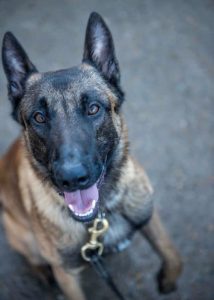 The Belgian Malinois is a medium-size Belgian shepherd dog that at first glance resembles a German Shepherd Dog. Malinois are shorthaired, fawn coloured dogs with a black mask. Malinois have a great deal of stamina and truly enjoy working. They are intelligent and very active dogs that excel at many tasks. In addition to herding, they also do well with police work, search and rescue, and in performance events, such as agility. People who are not familiar with the Malinois often confuse him with the German Shepherd Dog, but there are significant differences in the body structure and temperament of the two breeds.
The Belgian Malinois is a medium-size Belgian shepherd dog that at first glance resembles a German Shepherd Dog. Malinois are shorthaired, fawn coloured dogs with a black mask. Malinois have a great deal of stamina and truly enjoy working. They are intelligent and very active dogs that excel at many tasks. In addition to herding, they also do well with police work, search and rescue, and in performance events, such as agility. People who are not familiar with the Malinois often confuse him with the German Shepherd Dog, but there are significant differences in the body structure and temperament of the two breeds.
Malinois are smaller dogs with lighter bones. They stand with their weight well on their toes, which gives them a square body profile, while today’s GSD has a long, sloping back and carries his weight flatter on his feet. Malinois are fawn coloured, red, or brown, and the tips of their hair are black, while the GSD is usually tan with a black saddle. Additionally, the Malinois has a more refined, chiseled head that the GSD and smaller, more triangular ears.
Many think that the Malinois is more alert and quicker to respond than the GSD. They’re also very sensitive dogs that don’t respond well to harsh training methods. Some Malinois are friendly and assertive, but others are reserved and aloof with strangers. They should never have a fearful or aggressive temperament. Because of their energy level and sensitivity, Malinois are recommended only for people who have previously owned dogs and have experience with dog training. Malinois are very intense dogs who like to be included in all of the family activities.
Malinois excel at obedience, tracking, agility, flyball, herding, showing, Schutzhund and other protection sports, search and rescue, and police work. Trainers describe them as having a high “play drive,” which means that they love to play, and about anything you ask them to do is play to them. But the Malinois’ owner should never forget that this is a breed that was developed to protect and herd. Poorly bred Malinois or ones that have been poorly socialized may be aggressive out of fear or shyness. Additionally, although well-socialized Malinois are good with children, especially if they are raised with them, they may have a tendency to nip at their heels and try to herd them when playing.
Belgian bundle of energy
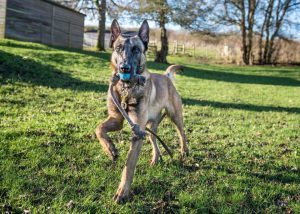 Equally as important as consistent and loving guidance is being willing to provide the dog with sporting and mental challenges. This Belgian bundle of energy’s enormous urge for activity and exercise must absolutely be taken into account. If this is neglected, the pedigree dog develops unpleasant behaviour patterns and has an occasional tendency to show excessive aggression. Along with training to be a working dog for the police, customs or rescue services, dog sport presents a good balance. These playful and energetic dogs can get hooked on almost all types of sport. Thanks to their excellent jumping capability, whirlwind speed and unusual climbing abilities, they achieve notable success with agility in particular.
Equally as important as consistent and loving guidance is being willing to provide the dog with sporting and mental challenges. This Belgian bundle of energy’s enormous urge for activity and exercise must absolutely be taken into account. If this is neglected, the pedigree dog develops unpleasant behaviour patterns and has an occasional tendency to show excessive aggression. Along with training to be a working dog for the police, customs or rescue services, dog sport presents a good balance. These playful and energetic dogs can get hooked on almost all types of sport. Thanks to their excellent jumping capability, whirlwind speed and unusual climbing abilities, they achieve notable success with agility in particular.
However, the Malinois stands out for more than just its sporting achievements and vigilance; its pronounced willingness to learn is just as remarkable as its boundless energy. Thanks to their high intelligence and eagerness to learn new things, they prove docile pupils who constantly wish to please their teacher. Their calm and people-oriented manner proves suitably helpful. Excessive severity is not just inappropriate, but also highly unnecessary when it comes to these sensitive souls. With love, patience and lots of time for shared (sporting) activities, these watchful herding dogs will become reliable family dogs that will remain loyal to their loved ones in all situations.